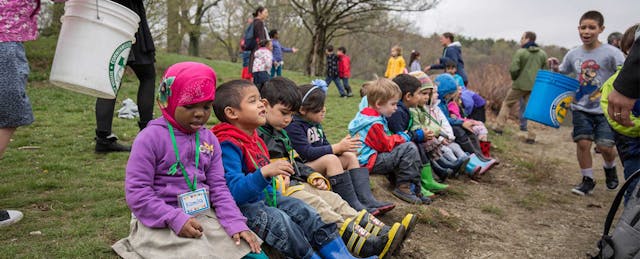The latest buzzword in U.S. public education these days is personalized learning.
Depending on whom you ask, the term refers to a model, a strategy, a plan, or just plain old good instruction. Personalized learning is something teachers do, something students do, something teachers do with students, or something students do with one another. Personalized learning is a noun, a verb, and an adjective. It is either impossible without technology or requires no technology at all. For anyone seeking to label an ideal education experience or garner support for a new initiative, personalized learning provides the answer.
The excitement shared by proponents of personalized learning eclipses any universal agreement about what it actually means. In fact, there is probably more consensus among the organizations external to schools that espouse it than among the educators within schools charged with enacting it. [A short list of organizations includes funders like the Gates Foundation and Next Generation Learning Challenges and advocacy groups like the International Association for K-12 Online Learning (iNACOL) and the International Society of Technology Education (ISTE). All use definitions of personalized learning that are remarkably similar but differ in areas of emphasis.]
If we distill the many definitions of personalized learning, we are usually left with at least two common elements: (a) students have a say in the learning process, and (b) students’ learning experiences are determined in part by their individual strengths and needs. Defined this way, there is much to like about personalized learning. Not only does it empower young learners; it prepares them for success in school and life.
The corollaries of personalized learning are equally attractive. They include things like blended learning, deeper learning, 21st century learning, competency- and mastery-based learning, learner profiles, personal learning plans, personal learning pathways, anytime/anywhere learning, flexible learning environments… the list goes on and on.
Personalized learning’s all-inclusiveness, usually a good thing, in fact puts it at risk. Educators and others interested in the future of personalized learning must clarify, to a profounder extent than done now, the specific problems in public education that one or more of the tenets of personalized learning are supposed to solve.
This is not to say that the work of educators ought to be reduced to identifying problems that need solving. Personalized learning has laudable aims. But the contemporary narrative lacks the precision educators need to apply it in any meaningful way.
Like the learning process itself, schools are complex places. In fact, it’s their very complexity that calls out for the principles of personalized learning to address well-defined needs and achieve unambiguous goals. Experienced educators know well that most educational reforms are highly idealized, lacking sensitivity to context.
Michael Horn, a colleague of mine, spends a lot of time in schools. I asked him once to tell me about the most powerful example of personalized learning he ever saw. The answer I anticipated included plenty of technology, lots of real-time data about students, creative projects, different grouping strategies, and a vibrant, flexible space in which all of this happens.
Instead, I was surprised by the pragmatism of his response. He described a school whose teachers learned, after a very reflective and deliberate process of discovery, that they didn’t know their students well enough: what their students have achieved, what they want to achieve, what’s holding them back. Following this process, school leadership modified the schedule to provide 15 minutes of uninterrupted time for students to confer with their teacher, one-on-one, about their academic and non-academic goals on a regular basis.
As any school administrator will tell you, changing the master schedule is not a light undertaking. But making time for conversations was only the starting point. To use it well, other aspects of school life had to be rethought, including developing a deeper understanding of the relationship between student engagement and performance.
Education initiatives can alter things in fundamental ways, or change the words we use to describe the status quo. When we hear about schools that are making the shift to personalized learning, we should not hesitate to ask why and what it will look like. Otherwise, personalized learning becomes the answer in search of a question.


